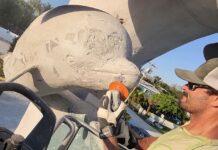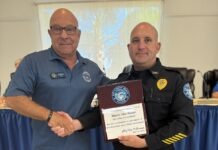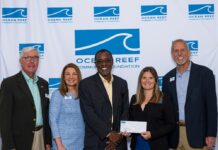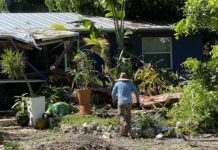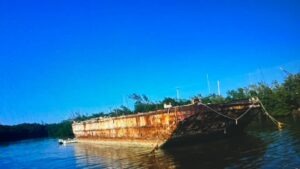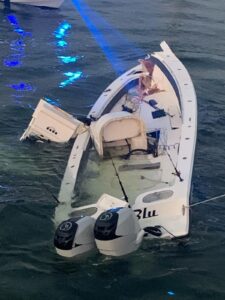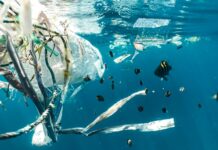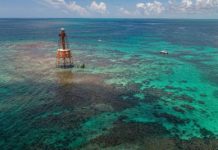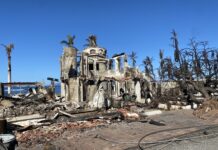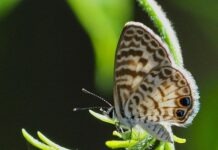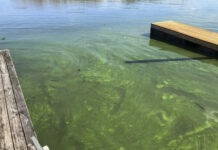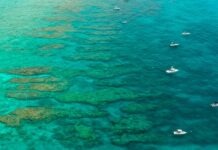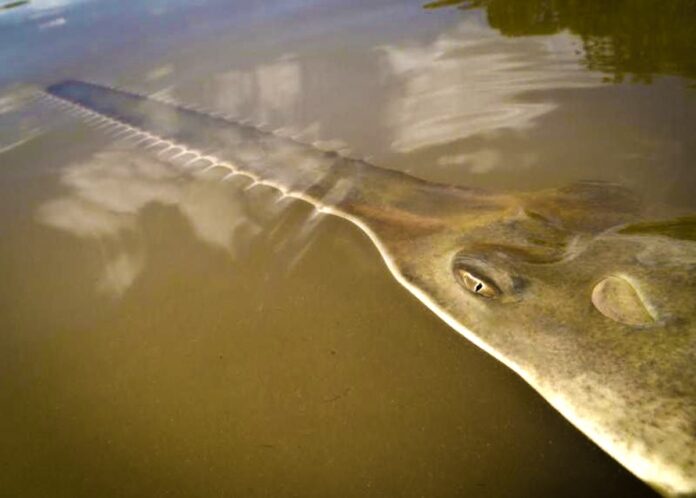
For dozens of critically endangered sawfish in the Florida Keys that have seen their numbers dwindle in recent months, a team of emergency rescuers is on the case.
This week, in an effort led by NOAA Fisheries and FWC in partnership with four Florida-based and national organizations including Havenworth Coastal Conservation, Ripley’s Aquariums, Mote Marine Laboratory and Dynasty Marine Associates Inc., teams were given the green light to rescue ailing fish and transport them to quarantine facilities for observation, research and rehabilitation.
Now listed as a critically endangered species due to habitat loss and overfishing even before the unusual mortality event, the smalltooth sawfish was the first marine fish to receive federal protection in 2003 under the Endangered Species Act – after some researchers estimate its population in Florida declined by up to 95%. With lifespans of 30 years or more, the species can take up to 11 years to reach sexual maturity, making population recovery efforts even more daunting.
“As an endangered species, (sawfish) are of the highest concern for everybody, especially when we’re losing such a large number of breeding-age animals,” Dynasty president Ben Daughtry told the Weekly.
Since investigators began tracking the mortality event in late 2023, they have seen erratic sawfish behavior and deaths, paired with widespread reports of spinning and whirling fish throughout the Keys; 109 confirmed sawfish have been affected, along with 28 documented deaths as of March 24. The majority of affected fish have been larger animals, 7 to 14 feet in length, documented along shorelines and stranded on grass flats in the Lower Keys. However, the true effect of the mortality event is likely much greater.
“We suspect that total mortalities are greater, since sawfish are negatively buoyant and thus unlikely to float after death,” said NOAA’s sawfish recovery coordinator Adam Brame in a press release. “Given the limited population size of smalltooth sawfish, the mortality of at least two dozen sawfish could have an impact on the recovery of this species.”
NOAA’s release acknowledged that the effort is the first of its kind ever attempted in the U.S., with “complex” logistics as partner organizations continually evaluate how to address the unprecedented event. Specific care guidelines for ailing fish and degrees of intervention are still being developed, and each animal’s status will be individually evaluated by NOAA’s Smalltooth Sawfish Recovery Implementation Team.
“Our goal is to release all rescued sawfish back to the wild once rehabilitated,” Brame said.
Mote Marine Laboratory and Dynasty are two of the three agencies tapped to house and rehabilitate the sawfish, if the opportunity arises. The other is Ripley’s Aquariums.
“We reached out to NOAA and FWC to offer the immediate assistance and support of our expert scientists, vets and specialized marine species quarantine facilities for any response deemed necessary,” said Mote president and CEO Michael Crosby in a press release. “Without any clear source of financial support, we have committed Mote resources without hesitation to this significant, challenging and unprecedented initiative because it is at the heart of our mission and why Mote exists.”
“We will do everything we can to prioritize the well-being of the sawfish,” said Kathryn Flowers, Mote’s lead scientist for the rescue initiative. “Attempts to solve this mystery call for robust collaboration.”
As the exact cause of the fish deaths and spinning behavior remains unknown, scientists are chasing leads from a higher-than-usual abundance of the Gambierdiscus family of algae, known for producing a variety of toxins. Nonetheless, Brame said, the ability to study the animals in a controlled environment could “give us critical information to learn about the nature of the distress.”
Rescue efforts are being quarterbacked by FWC and NOAA and are currently restricted to distressed animals, Daughtry said.
“What Dynasty can provide is we built a specific transport box for the sawfish, and we’ve got a trailer that we use for transporting our animals that has oxygen and that sort of equipment,” he added.
With a limited population of remaining sawfish, Daughtry was asked whether any consideration had been given to more extreme forms of intervention, such as captive breeding programs used to maintain other endangered species around the world. In July 2023, SeaWorld Orlando welcomed three smalltooth sawfish pups from a pair of breeding sawfish residing at the park since the 1980s – but the park heralded the accomplishment as only the second aquarium in the world to have a successful birth.
“None of the conversations I’ve been involved in are talking about trying to bring in non-symptomatic animals,” Daughtry said. “The concern is always, what if this comes back next year? We’ve got to learn what’s going on and do the best we can to figure out how we might be able to handle this in the future. It’s an evolving set of goal posts right now.”
Ways to Help:
- Report sightings of healthy, sick, injured or dead sawfish to FWC’s Sawfish Hotline (1-844-472-9347 or sawfish@myfwc.com). Include date, time and location of the encounter, estimated length, water depth and any other relevant details.
- Report sightings of other abnormal fish behavior, fish disease, or fish kills to FWC’s Fish Kill Hotline (800-636-0511) or scan the QR code to submit a fish kill report.
- Support the Sawfish Rescue Initiative with a donation by visiting www.mote.org/sawfish




